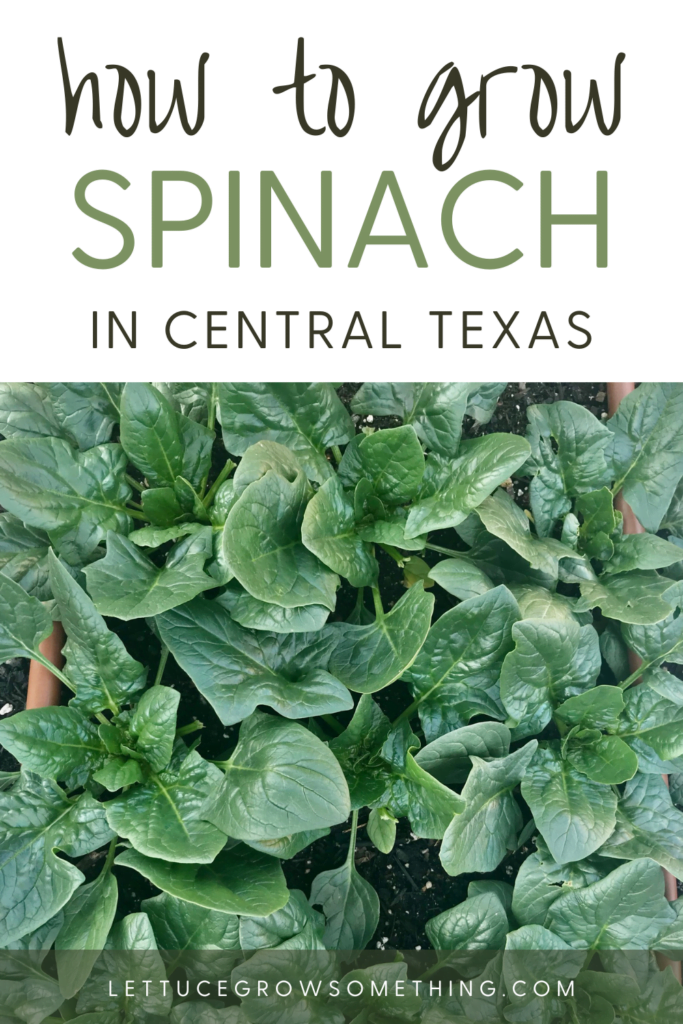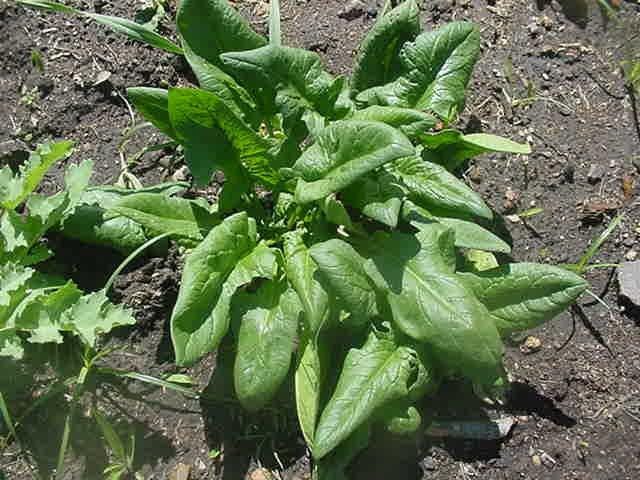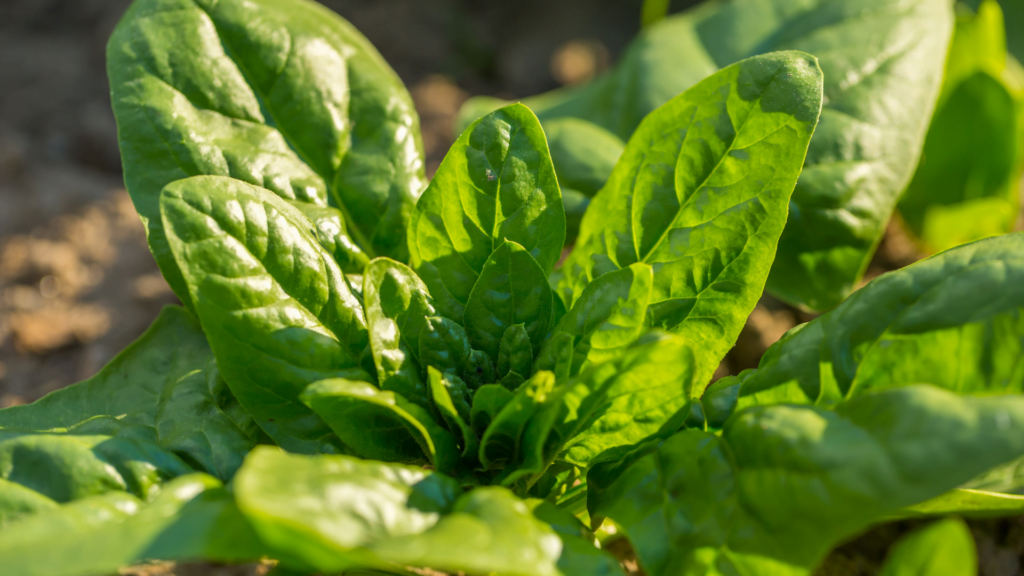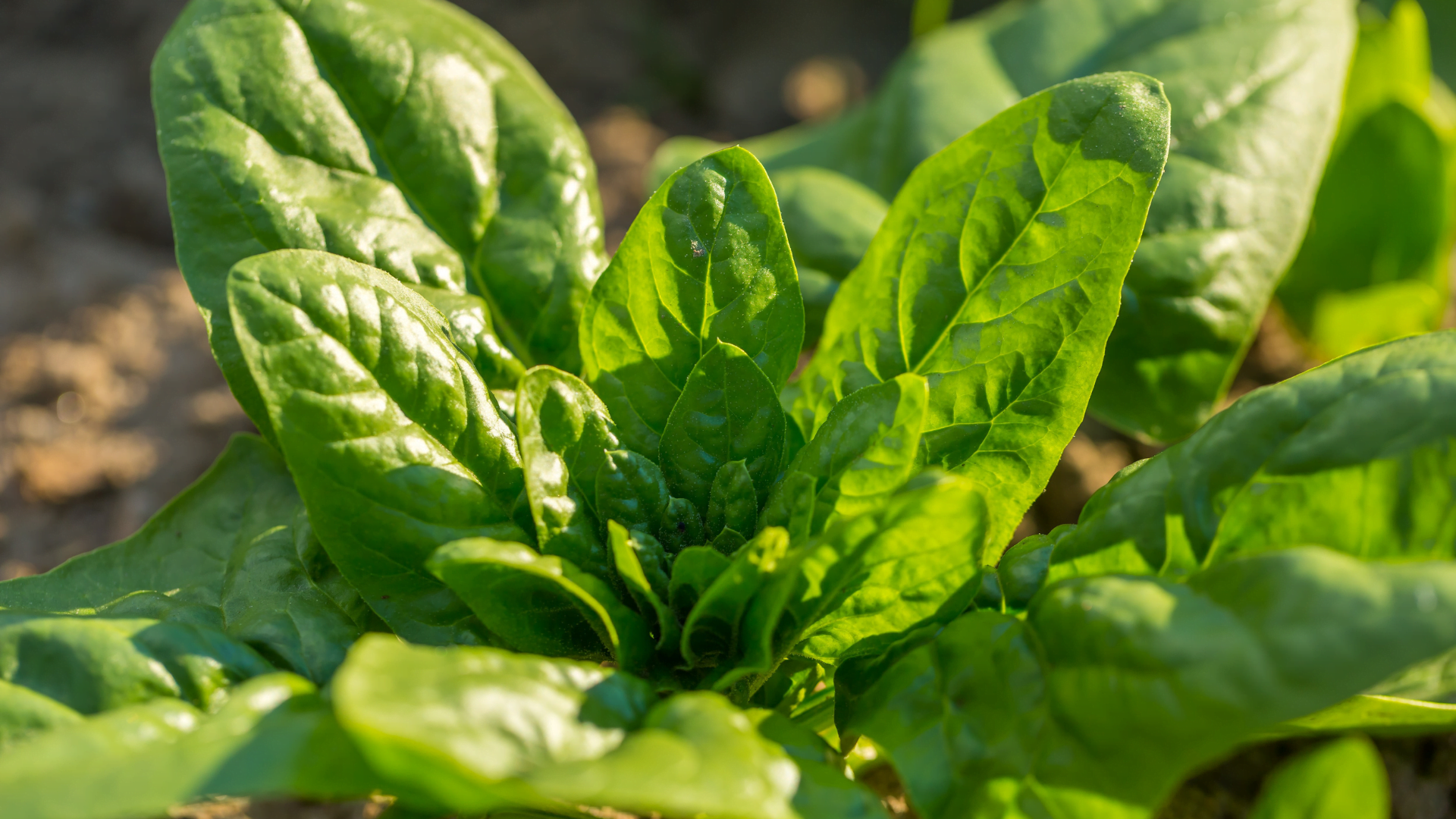So you’ve got a green thumb and want to try your hand at growing spinach in the Lone Star State? Well, you’re in luck! In this article, we’ll be sharing some handy tips to help you successfully grow spinach in the unique climate of Texas. From selecting the right variety to providing the ideal growing conditions, we’ll cover all the essential steps to ensure a bountiful harvest. So grab your gardening gloves, because it’s time to get your spinach growing game on!

Selecting the Right Spinach Variety
Consider heat-tolerant varieties
When selecting spinach varieties to grow in Texas, it’s important to consider their heat tolerance. Spinach prefers cooler temperatures, so choosing heat-tolerant varieties will increase your chances of success. Some popular heat-tolerant spinach varieties include Malabar Spinach, New Zealand Spinach, and Red Kitten Spinach. These varieties can handle the higher temperatures of Texas summers without bolting prematurely.
Choose fast-maturing cultivars
To ensure a successful spinach harvest, it’s essential to choose fast-maturing cultivars, especially in Texas where the growing season may be shorter. Varieties like Bloomsdale and Space Spinach are known for their quick growth and early maturation. These cultivars allow you to enjoy fresh spinach leaves in a shorter amount of time, making them ideal choices for Texas gardeners.
Opt for disease-resistant spinach
Spinach can be susceptible to certain diseases, and choosing disease-resistant varieties can help prevent potential issues. Look for spinach varieties that are resistant to common diseases like downy mildew and fusarium wilt. Disease-resistant varieties such as Tyee Spinach and Avon Spinach have been bred to withstand these diseases, providing you with a healthier and more productive spinach crop.
Selecting the best spinach varieties for Texas
When considering which spinach varieties to grow in Texas, it’s important to choose those that are heat-tolerant, fast-maturing, and disease-resistant. Some recommended options for Texas gardeners include Malabar Spinach, New Zealand Spinach, Red Kitten Spinach, Bloomsdale, Space Spinach, Tyee Spinach, and Avon Spinach. These varieties are well-suited for the Texas climate and will give you the best chance of a successful spinach harvest.
Preparing the Soil
Test and amend the soil pH
Before planting spinach, it’s crucial to test your soil’s pH levels. Spinach thrives in slightly acidic to neutral soil with a pH range of 6.0 to 7.0. If your soil’s pH is outside this range, you may need to amend it accordingly. Adding organic matter, such as compost or well-rotted manure, can help improve the pH and nutrient levels of the soil, creating a more favorable environment for spinach growth.
Improve soil drainage
Spinach plants prefer well-draining soil to prevent waterlogging, which can lead to root rot and other issues. To improve soil drainage, you can incorporate organic matter into the soil, which helps loosen compacted soil and increase its ability to drain excess water. Additionally, raised beds or containers are great options for growing spinach in areas with poor soil drainage.
Add organic matter
Incorporating organic matter into the soil is beneficial for spinach growth in multiple ways. Organic matter helps improve soil structure, aeration, and water-holding capacity. It also provides essential nutrients to the plants as it decomposes. Adding compost, aged manure, or leaf mulch to the soil before planting will enrich it and create a favorable growing environment for your spinach.
Preparing the soil for spinach planting
To prepare the soil specifically for spinach planting, start by removing any weeds or debris from the planting area. Then, perform a soil test to determine the pH level and nutrient composition. Based on the test results, amend the soil with organic matter and adjust the pH if necessary. Lastly, ensure that the soil has good drainage by amending it accordingly or choosing raised beds or containers for planting.

Timing the Planting
Determining the ideal planting season
Timing is crucial when it comes to planting spinach in Texas. Spinach prefers cool weather, so it’s best to plant it in early spring or late fall. In Texas, this typically means planting spinach in February through March or September through October. By planting during these periods, you can take advantage of milder temperatures and avoid the extreme heat of Texas summers, which can cause spinach to bolt prematurely.
Planting spinach seeds vs. transplants
You have two options when it comes to planting spinach: seeds or transplants. Planting spinach seeds directly in the garden is more common and cost-effective. However, if you want to get a head start or have a shorter growing season, you can start spinach transplants indoors and then transplant them into the garden. Whichever method you choose, make sure to follow the recommended planting depth and spacing for the variety you’ve selected.
Tips for successful planting in Texas
When planting spinach in Texas, it’s important to consider the region-specific climate and potential challenges. Here are some tips for successful planting:
Protect against the heat: To protect your spinach from extreme heat, consider planting it in areas with partial shade or providing shade cover during the hottest parts of the day.
Start early: Planting as early as possible in the recommended planting season will help ensure your spinach has enough time to mature before the onset of hot weather.
Provide consistent moisture: Spinach requires consistent moisture for optimal growth. Water deeply and regularly, especially during dry spells, to prevent the plants from drying out.
Mulch to conserve moisture: Applying a layer of organic mulch around your spinach plants helps retain moisture in the soil, reduce weed growth, and maintain a more consistent soil temperature.
Monitor for pests and diseases: Keep an eye out for common spinach pests such as aphids and leafminers. Also, be vigilant for signs of diseases like downy mildew or fusarium wilt. Early detection and prompt action can help prevent widespread damage.
By following these tips, you can increase your chances of a successful spinach harvest in Texas.
Creating Suitable Growing Conditions
Finding the right sun exposure
Spinach requires adequate sunlight to grow and thrive. Choose a location with full sun or partial shade, depending on the intensity of the Texas sun. Aim for at least six hours of sunlight per day, but be mindful of providing some shade during the hottest parts of the day to prevent the spinach from wilting or bolting prematurely.
Providing shade during extreme heat
In Texas, the scorching summer heat can take a toll on spinach plants. To mitigate the effects of extreme heat, consider providing shade to your spinach plants during the hottest hours of the day. This can be accomplished through shade cloth, row covers, or by planting spinach in areas that receive partial shade from surrounding structures or taller plants.
Using row covers
Using row covers is a great way to create a favorable growing environment for spinach. Row covers not only provide shade during extreme heat but also protect the plants from pests and heavy rain. They also act as a barrier against common spinach pests, such as aphids and leafminers. Just make sure to remove the covers during cooler periods or when the plants require pollination.
Maintaining optimal temperature and moisture levels
Maintaining optimal temperature and moisture levels is crucial for the successful growth of spinach. Ensure that your spinach plants are not exposed to extreme temperature fluctuations, which can stress the plants and hinder their growth. Additionally, monitor the soil moisture levels and water accordingly, keeping the soil consistently moist but not waterlogged. Regularly check for signs of under or overwatering and adjust your watering routine as needed.
By creating suitable growing conditions for your spinach, you can help ensure healthy and productive plants throughout the growing season.

Planting Spinach Seeds
Preparing seedbeds
To plant spinach seeds, start by preparing the seedbeds. Remove any weeds or debris from the area, and loosen the soil with a garden fork or tiller. Rake the soil surface to create a smooth and fine texture, which will promote good seed-to-soil contact for germination. If the soil is compacted, consider adding organic matter to improve its structure before sowing the seeds.
Thinning seedlings
Once the spinach seeds have germinated and the seedlings have emerged, thinning becomes necessary to provide adequate space for each plant to grow. Thin the seedlings by gently pulling out the weaker ones, leaving the strongest and healthiest plants with sufficient spacing between them. Overcrowded plants can result in stunted growth and increased competition for nutrients, sunlight, and water.
Planting depth and spacing
When planting spinach seeds, follow the recommended planting depth and spacing for the specific variety you’re growing. Generally, spinach seeds should be planted about half an inch deep in well-prepared soil. Space the seeds or seedlings according to the variety’s requirements, typically around 4 to 6 inches apart in rows that are 12 to 18 inches apart. Proper spacing allows the plants to receive optimal sunlight, air circulation, and room for root development.
Overcoming common seed planting challenges
Planting spinach seeds can sometimes present challenges, but with the right techniques, you can overcome them. Here are some common challenges and how to address them:
Slow or uneven germination: To promote faster and more even germination, ensure that the soil is consistently moist and maintain a temperature range of 50 to 70°F (10 to 21°C). If necessary, cover the seedbeds with a thin layer of mulch to help retain moisture and regulate temperature.
Birds or rodents eating the seeds: Protect your newly planted seeds from birds or rodents by using bird netting, row covers, or other protective measures. This will prevent them from accessing the seeds and potentially damaging your crop.
Seedlings succumbing to extreme heat: If intense heat is causing your seedlings to wilt or bolt prematurely, provide shade or use row covers during the hottest parts of the day to protect them from direct sun exposure. Ensuring the soil stays consistently moist can also help mitigate the effects of heat stress.
By addressing these common seed planting challenges, you can increase your chances of successfully growing spinach from seeds.
Caring for Growing Spinach
Watering spinach plants
Spinach plants require consistent moisture to thrive, so it’s important to provide them with adequate water. Water deeply, ensuring that the soil is evenly moist but not waterlogged. Aim to keep the soil consistently moist throughout the growing season, especially during dry spells. Mulching around the plants can help conserve moisture and reduce the frequency of watering.
Fertilizing spinach
Spinach is a relatively light feeder and does not require excessive fertilization. However, incorporating organic matter into the soil before planting will provide the plants with a good foundation of nutrients. If you notice signs of nutrient deficiencies, such as yellowing leaves, you can apply a balanced fertilizer or feed the plants with a liquid fish emulsion or seaweed fertilizer to replenish the nutrients.
Mulching to conserve moisture
Applying a layer of organic mulch around your spinach plants helps conserve moisture in the soil. Mulching also helps suppress weed growth, regulate soil temperature, and reduce the risk of soil erosion. When applying mulch, make sure to leave a small gap around the plant’s base to prevent the development of rot or fungal diseases.
Managing weeds and pests
Weeds can compete with spinach plants for nutrients, sunlight, and water, so it’s important to keep them under control. Regularly remove any weeds that appear near your spinach plants, being careful not to disturb the roots. Mulching can also help suppress weed growth. Additionally, monitor your plants for signs of pests such as aphids or leafminers. If necessary, apply organic pest control methods or seek advice from your local extension office for recommendations.
By providing appropriate care, including watering, fertilizing, and managing weeds and pests, you can ensure your spinach plants remain healthy and productive.

Harvesting Spinach
Determining the right time to harvest
Spinach leaves should be harvested when they are the desired size and before they become tough and bitter. The exact timing will depend on the variety and growing conditions, but generally, spinach leaves can be picked when they reach around 4 to 6 inches in length. Harvesting young, tender leaves promotes continuous growth and a more prolonged harvest period.
Harvesting techniques
To harvest spinach, use a sharp pair of garden shears or scissors to cut the outer leaves individually, leaving the center leaves intact to continue growing. Alternatively, you can harvest the entire plant by cutting it off at the base, about 1 inch above the soil level. Harvested spinach leaves should be rinsed with cool water to remove any dirt or debris.
Regular harvest for continuous production
To encourage continuous spinach production, practice regular harvests. This involves selectively picking mature leaves while allowing the smaller ones to continue growing. By regularly harvesting the outer leaves, you can promote new growth from the center of the plant and extend your harvest season. Regular harvests also prevent the spinach from bolting, which is the premature flowering and seed production stage.
Post-harvest tips
After harvesting spinach, it’s important to handle it properly to maintain its freshness and quality. Remove any damaged or wilted leaves and rinse the spinach under cool water to remove any residual dirt. Gently pat the leaves dry or use a salad spinner to remove excess moisture. Store the spinach in the refrigerator in a breathable container or a plastic bag with a few holes to allow for air circulation. Properly stored, fresh spinach can last for up to a week.
Dealing with Common Spinach Problems
Addressing spinach bolting
Spinach bolting refers to the premature flowering and seed production stage that can occur when plants are exposed to high temperatures or experience other stressors. To address spinach bolting, it’s crucial to provide shade during the hottest parts of the day and ensure consistent moisture levels. Harvesting spinach regularly before it reaches maturity can also help prevent or delay bolting.
Managing fungal diseases
Fungal diseases, such as downy mildew and fusarium wilt, can affect spinach plants. To manage these diseases, practice good garden hygiene by removing any infected plant debris. Ensure optimal air circulation by spacing plants appropriately and avoiding excess humidity. If necessary, apply organic fungicides specifically formulated for spinach diseases. Regularly monitor your plants for any signs of fungal infections and take prompt action to prevent their spread.
Preventing insect infestations
Spinach can be vulnerable to insect infestations, with common pests including aphids and leafminers. To prevent insect infestations, regularly inspect your spinach plants for signs of pests. If aphids are present, you can wash them off with a strong blast of water or introduce natural predators like ladybugs or lacewings. For leafminers, implementing row covers or applying organic insecticides can help manage their population.
Handling environmental stressors
Environmental stressors, such as extreme heat or drought, can negatively impact spinach plants. To minimize the effects of these stressors, provide shade during peak sun exposure and ensure consistent moisture levels. Additionally, monitor weather conditions and water accordingly during periods of drought. Maintaining a healthy and well-maintained garden can also help spinach plants better cope with environmental stressors.
By addressing common spinach problems promptly and taking preventative measures, you can increase your chances of a successful spinach harvest.

Extending the Spinach Growing Season
Using succession planting
Succession planting involves sowing small batches of spinach seeds at regular intervals to ensure a continuous supply of fresh leaves throughout the growing season. By staggering your planting times, you can avoid having all your spinach plants mature at once. This approach allows you to enjoy a more extended harvest period and makes the most of the cooler seasons in Texas.
Growing spinach in containers
If you have limited space or want more control over your spinach’s growing conditions, growing spinach in containers is a great option. Choose a container with drainage holes and fill it with a well-draining potting mix. Place the container in a location that receives adequate sunlight or partial shade, depending on the intensity of the Texas sun. Regularly monitor soil moisture levels, as container-grown plants may require more frequent watering.
Utilizing shade structures
To extend the spinach growing season in Texas, consider utilizing shade structures. Erecting shade cloth or constructing pergolas or trellises can provide partial shade and protect your spinach plants from direct sun exposure during the hottest parts of the day. Shade structures help mitigate the effects of extreme heat and can extend the growing season by creating a more favorable environment for spinach growth.
Cold frame and greenhouse options
For more advanced gardeners, using cold frames or greenhouses can provide an excellent solution for extending the spinach growing season in Texas. These structures provide protection from extreme temperatures, allowing you to grow spinach earlier in the spring or later into the fall. They also offer more control over temperature, moisture, and other environmental factors, creating optimal conditions for spinach growth.
By utilizing succession planting, growing spinach in containers, utilizing shade structures, or using cold frames and greenhouses, you can extend the spinach growing season in Texas and enjoy fresh, homegrown spinach for a more extended period.
Storing and Preserving Spinach
Properly washing and storing spinach
To store freshly harvested spinach, start by washing it thoroughly to remove any dirt or debris. Fill a sink or a large bowl with cool water and gently submerge the spinach leaves. Swish them around to dislodge any dirt, then lift the leaves out of the water and transfer them to a colander or salad spinner to drain. Once the leaves are dry, store them in a breathable container or a plastic bag with a few holes in the refrigerator.
Freezing spinach
Freezing spinach is an excellent method for preserving its freshness for longer. To freeze spinach, start by blanching the leaves in boiling water for a brief period of time, usually around 1-2 minutes. Immediately transfer the blanched spinach to an ice bath to stop the cooking process and preserve its color and nutrients. Once cooled, remove excess moisture by pressing the spinach leaves between paper towels, then pack them into airtight freezer bags or containers.
Blanching before freezing
Blanching spinach before freezing helps retain its color, texture, and nutritional properties. Blanching involves briefly boiling the spinach leaves in water, followed by immediate cooling in an ice bath. This process halts the enzymes responsible for deterioration and helps maintain the overall quality of the frozen spinach. By blanching before freezing, you can enjoy frozen spinach that retains its taste and nutritional value for an extended period.
Using preserved spinach in various recipes
Preserved spinach, whether frozen or properly stored in the refrigerator, can be used in a variety of recipes. It’s a versatile ingredient that adds nutrition and flavor to dishes like soups, stews, smoothies, omelets, quiches, and pasta sauces. Thawed frozen spinach can be squeezed to remove excess moisture before adding it to your recipes. Properly stored spinach can be enjoyed in numerous ways, providing you with a delicious and nutritious ingredient year-round.
By properly washing, storing, and preserving spinach, you can extend its shelf life and enjoy its flavors and health benefits even after the growing season is over.
In conclusion, growing spinach in Texas requires careful consideration of heat-tolerant varieties, soil preparation, timing, suitable growing conditions, seed planting techniques, proper care, harvesting, problem management, extending the growing season, and storing and preserving techniques. By following the tips and guidelines provided, you can cultivate a successful spinach crop in Texas and enjoy the fresh, nutritious leaves in various culinary creations.



